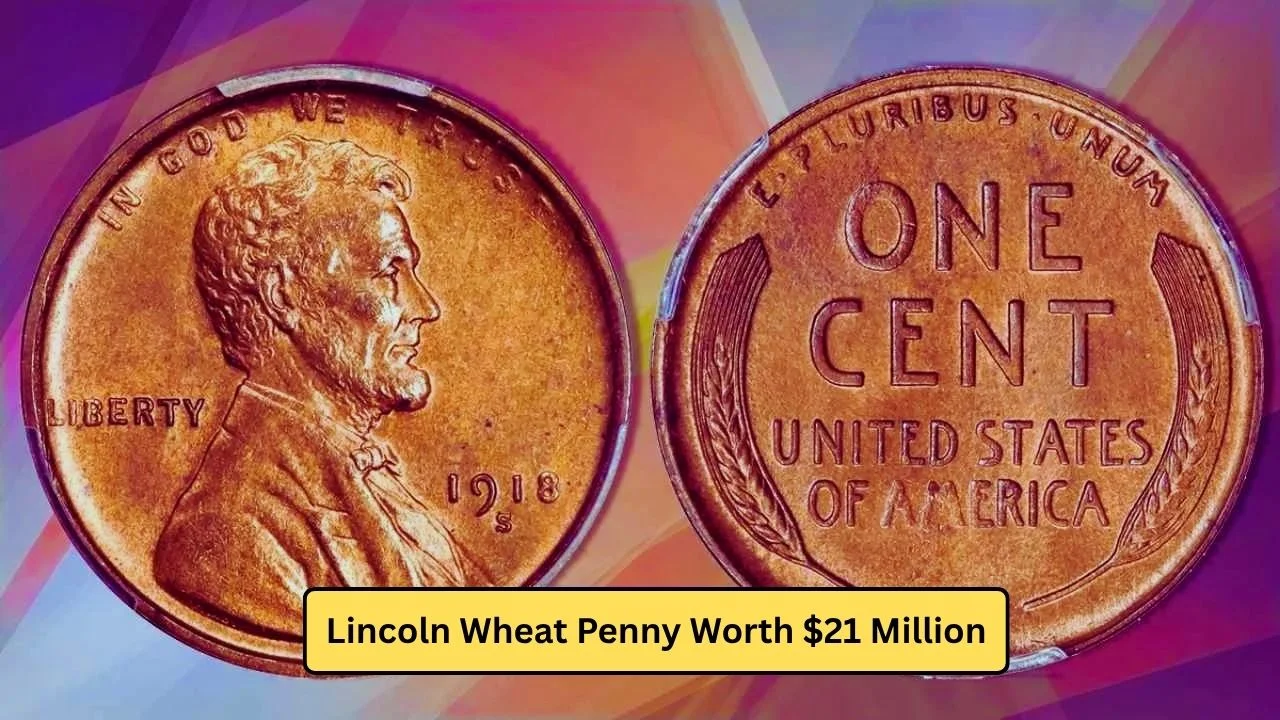Imagine finding a penny in your pocket worth $21 million. Sounds like a dream, right? The Lincoln Wheat Penny, a small coin from the early 20th century, has sparked wild stories of life-changing value. Some rare versions are so valuable they’ve become legends among coin collectors. Let’s uncover the truth behind this iconic coin and see if you’re holding a fortune!
What Is the Lincoln Wheat Penny?
The Lincoln Wheat Penny, or Wheat Cent, is a one-cent coin minted in the U.S. from 1909 to 1958. It features Abraham Lincoln’s profile on the front and two wheat stalks on the back, giving it the “Wheat Penny” nickname. While most are worth just a cent, rare versions can fetch millions due to minting errors or low production.
History of the Lincoln Wheat Penny
Introduced in 1909 to honor Lincoln’s 100th birthday, this coin was designed by Victor David Brenner. It was the first U.S. coin to feature a president’s portrait, replacing the Indian Head Penny. Minted in Philadelphia, Denver, and San Francisco, billions were produced, but certain years and errors made some extraordinarily rare.
Key Historical Moments
- 1909: First year, with some coins bearing Brenner’s “VDB” initials.
- 1943: Most pennies were steel due to WWII copper shortages, but a few copper ones were accidentally minted.
- 1955: Famous for the “Double Die” error, creating a blurred design.
Why Is It So Valuable?
The $21 million valuation often ties to the 1943 copper penny, a rare minting error. During WWII, pennies were made of steel to save copper, but a few copper planchets were mistakenly used. Fewer than 20 exist, making them a collector’s holy grail. Their rarity, historical significance, and auction demand drive their value.
Factors Driving Value
- Rarity: Low mintage or errors like the 1943 copper penny.
- Condition: Mint-state coins fetch higher prices.
- Demand: Collectors compete fiercely for unique pieces.
| Key Rare Lincoln Wheat Pennies | Year | Estimated Value | Rarity Factor |
|---|---|---|---|
| 1943 Copper Penny | 1943 | Up to $21M | Minting error |
| 1909-S VDB | 1909 | $1,000–$100,000 | Low mintage |
| 1955 Double Die | 1955 | $1,000–$50,000 | Design error |
How to Spot a Rare Lincoln Wheat Penny
Think you have a valuable penny? Check your change! Here’s how to identify a rare Lincoln Wheat Penny:
- Date and Mint Mark: Look for 1943 copper, 1909-S VDB, or 1914-D. Mint marks (“S” or “D”) are below the date.
- Magnet Test: A 1943 copper penny won’t stick to a magnet; steel ones will.
- Weight: Copper pennies weigh 3.11 grams; steel ones weigh 2.7 grams.
- Condition: Uncirculated coins are more valuable. Avoid cleaning them!
| Identification Tips | Details |
|---|---|
| Magnet Test | Copper doesn’t stick; steel does. |
| Weight | Copper: 3.11g; Steel: 2.7g. |
| Key Dates | 1909-S VDB, 1914-D, 1943 Copper. |
| Errors | Look for double strikes or odd colors. |
Notable Auction Records
Rare Lincoln Wheat Pennies have made headlines at auctions:
- A 1943 copper penny sold for $1.7 million in 2010.
- A 1955 Double Die penny fetched $124,000 in top condition.
- A 1909-S VDB sold for over $100,000 in mint state.
These sales fuel the legend of a $21 million penny, though such a figure may reflect hype or private offers rather than confirmed sales.
Expert Tips for Coin Collectors
Ready to hunt for treasure? Follow these tips:
- Inspect Your Change: Check piggy banks, old jars, or bank rolls.
- Use a Magnifying Glass: Look for errors like double dies or missing mint marks.
- Get Professional Grading: Services like PCGS or NGC authenticate coins.
- Avoid Cleaning: Cleaning reduces value. Store coins in protective holders.
- Join Coin Clubs: Connect with collectors for tips and trades.
FAQs About the Lincoln Wheat Penny
Q: Is a $21 million penny real?
A: The figure is likely exaggerated, but 1943 copper pennies have sold for millions.
Q: How do I know if my penny is valuable?
A: Check the date, mint mark, and material. Get it appraised by PCGS or NGC.
Q: Are all Wheat Pennies valuable?
A: No, most are worth a few cents, but rare errors or years can be worth thousands.
Q: Can I find a rare penny in circulation?
A: Yes, though unlikely. Some have been found in change or old collections.
Conclusion
The Lincoln Wheat Penny is more than pocket change—it’s a piece of history with the potential to make you rich. From the rare 1943 copper penny to the iconic 1909-S VDB, these coins captivate collectors worldwide. Next time you see a penny, take a closer look. It could be worth millions! Start checking your change, join a coin club, or share this post with fellow treasure hunters!

